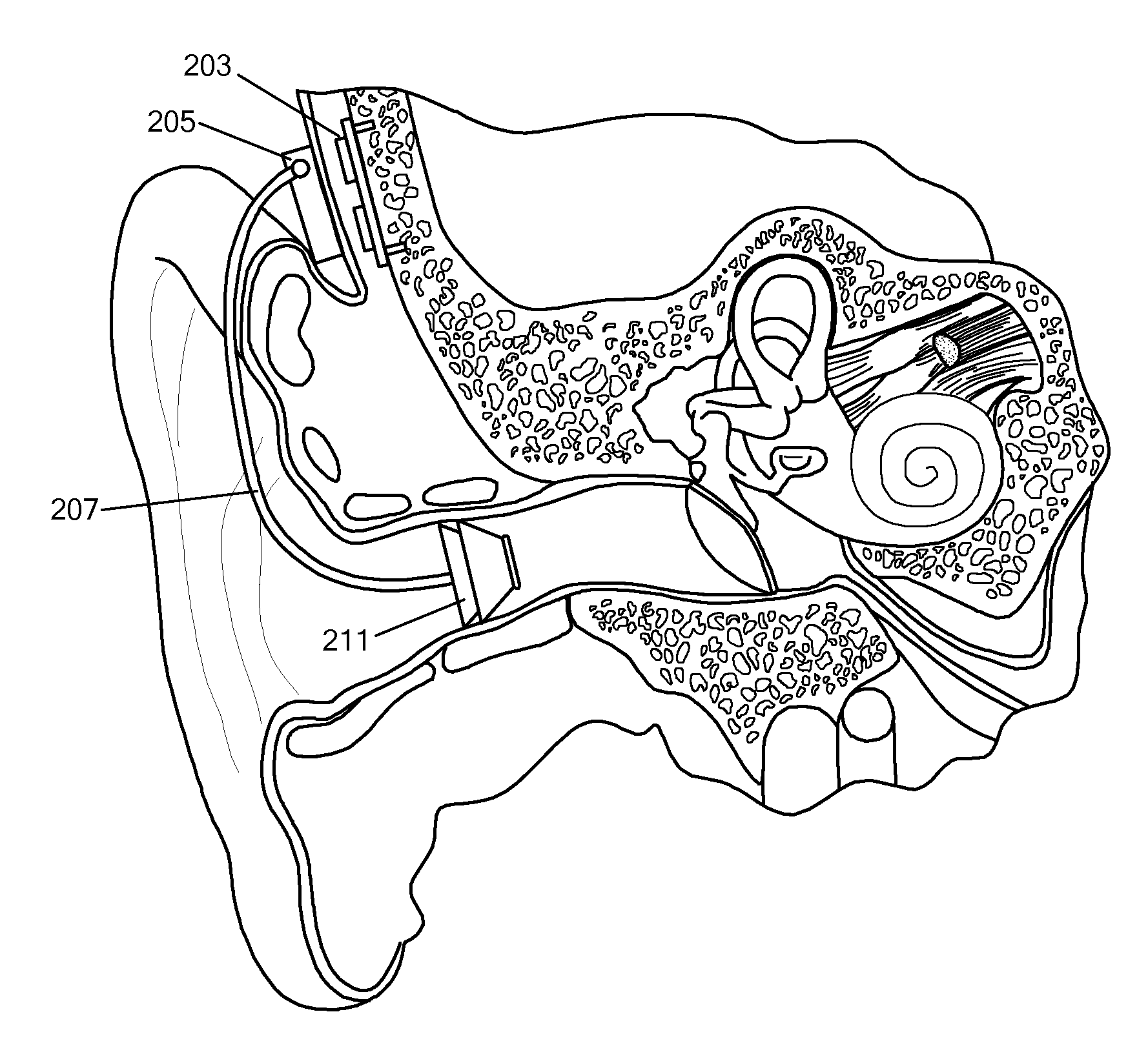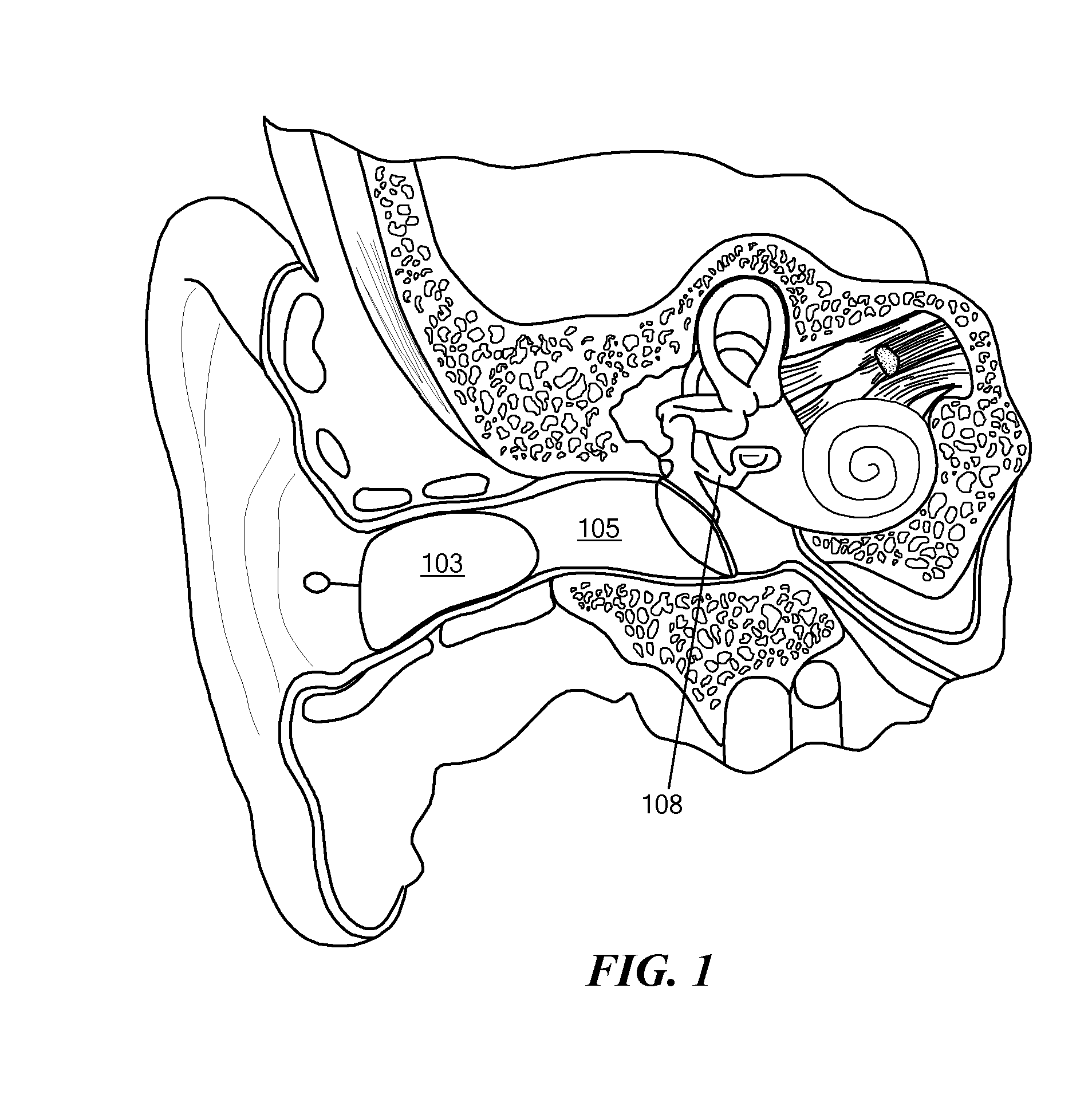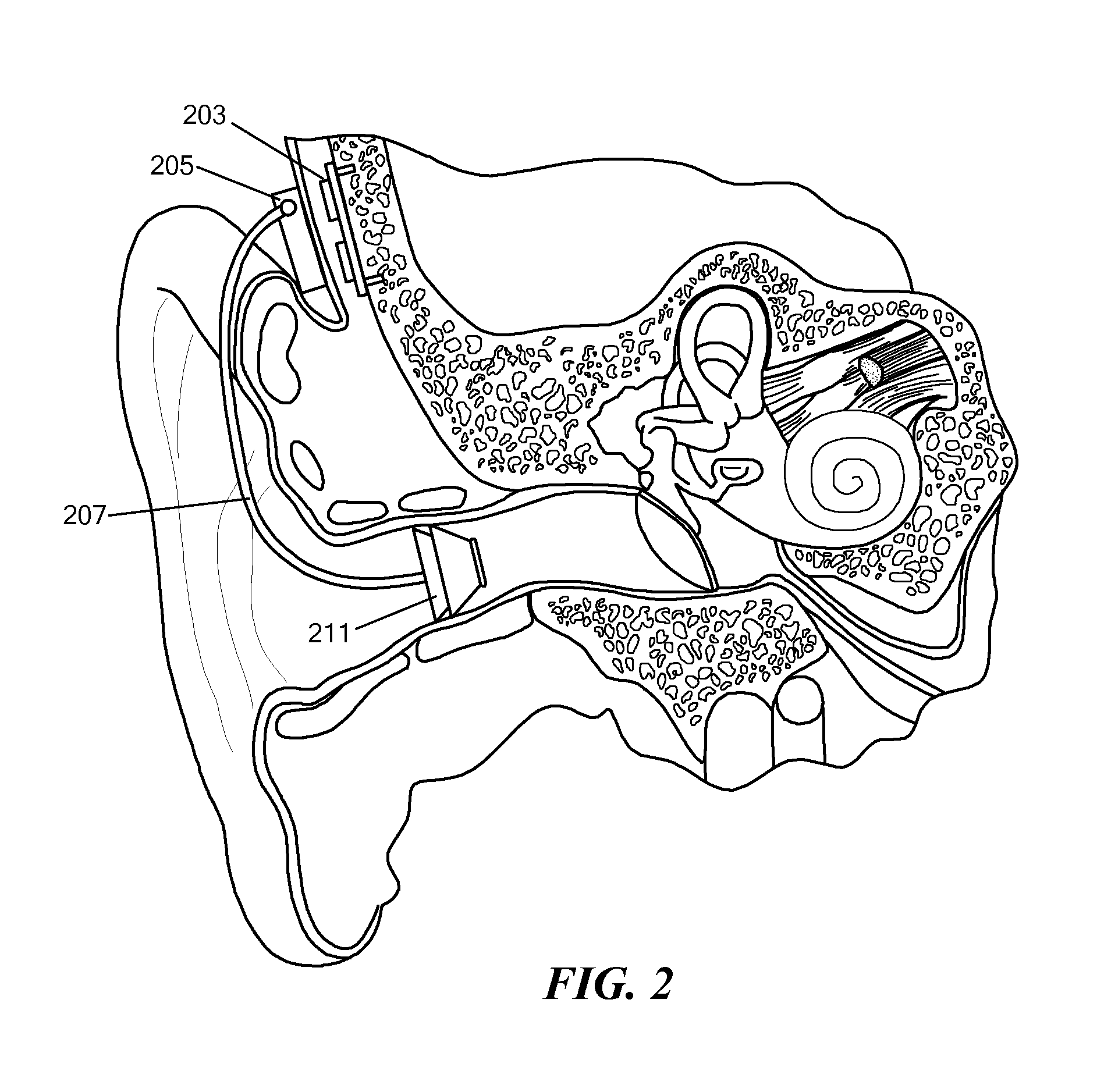Hearing System
a technology of hearing system and hearing aid, which is applied in the direction of hearing aid installation/interconnection, complete in canal hearing aid, electric apparatus, etc., can solve the problems of high cost of these devices, surgery is required, and the device is arguably the smallest of the hearing aids made today, so as to facilitate the placement of the sound processing unit
- Summary
- Abstract
- Description
- Claims
- Application Information
AI Technical Summary
Benefits of technology
Problems solved by technology
Method used
Image
Examples
Embodiment Construction
[0036]In illustrative embodiments, a system and method of positioning a sound processing unit of an acoustic hearing aid system is provided. The system includes a magnetic implant for placing under the skin of a patient, which is used to hold in place the sound processing unit of the hearing aid system. The majority of the sound processing unit of the hearing aid system may be concealed, for example, under the hair of a patient. Principal advantages include, but are not limited to, improved cosmetic appearance, improved comfort, reduced feedback and reduced occlusion. Details are described below.
[0037]FIG. 2 shows an acoustic hearing aid system, in accordance with one embodiment of the invention. The system includes an external portion and an implantable portion. The external portion includes, without limitation, a sound processing unit 205, a sound tube 207 and an ear canal insert piece 211. The sound processing unit 205 receives acoustic sound, which may be amplified. An acoustic,...
PUM
 Login to View More
Login to View More Abstract
Description
Claims
Application Information
 Login to View More
Login to View More - R&D
- Intellectual Property
- Life Sciences
- Materials
- Tech Scout
- Unparalleled Data Quality
- Higher Quality Content
- 60% Fewer Hallucinations
Browse by: Latest US Patents, China's latest patents, Technical Efficacy Thesaurus, Application Domain, Technology Topic, Popular Technical Reports.
© 2025 PatSnap. All rights reserved.Legal|Privacy policy|Modern Slavery Act Transparency Statement|Sitemap|About US| Contact US: help@patsnap.com



